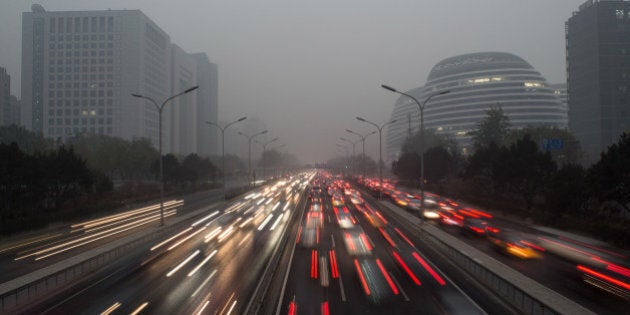
Perhaps you've heard of the notion of a global carbon quota. I first learned of it a few years ago, and got a refresher on the subject last month. It jolted me then, but even more so this time. Here's an overview, with some basic math.
Background
By consensus, world leaders agree that the 'safe' ceiling for global warming is two degrees Celsius. Beyond that lies a danger zone of instability and uncertainty. Two degrees may not sound like much, but temperatures during the last ice age were only about five degrees cooler than today.
Phew -- two degrees of breathing room. But here's the problem: the planet has already warmed 0.8 degrees, and the momentum of the greenhouse gas emissions humanity has already released into the atmosphere is expected to warm it another 0.8 degrees. Suddenly that breathing room is down to about 0.4 degrees.
So how much more carbon dioxide can we release globally and still stay under that two degree ceiling? In other words, what's our remaining global carbon quota?
And, how does that quota compare to known global reserves of oil, coal and natural gas? In other words, which will we run out of first, climate stability or fossil fuels?
Updated math
As of 2015, our global carbon quota stands at 535 billion tonnes of emissions. In other words, if we can limit total future global emissions from oil, coal and natural gas to that, we stand a chance of restricting global warming to two degrees.
But here's some unkind reality: according to the International Energy Agency, our confirmed global reserves of oil, coal and natural gas add up to 2,860 billion tonnes of emissions-in-waiting.
So our reserves are about five times our carbon quota. Put another way: there may be lots of fuel at the global gas station but that doesn't mean we can safely burn it.
There's one more sting to this math. 2014 global emissions from fossil fuels were about 37-billion tonnes. If emissions continue at this rate (and they're actually still growing), we'll exhaust our global quota in 15 years. That's when today's newborns will be entering high school.
To be sure, the above figures are best estimates. However, the World Bank and the International Energy Agency are among the heavyweight organizations that agree with the premise. Last fall, Bank of England Governor Mark Carney affirmed that the "vast majority of reserves are unburnable," if climate change is to be held to two degrees. A study published in the journal Nature in January suggested that if our carbon quota is to be respected, 80 per cent of coal reserves, 50 per cent of gas reserves and 33 per cent of oil reserves -- including most of the oil sands -- must remain in the ground.
(This frightening math appears not to be deterring the fossil fuel industry: it spent $674 billion in 2012 on exploration, and it's no small irony that companies around the world are excitedly waiting for the Arctic to melt so they can exploit reserves there. Here in the Maritimes, the carbon quota is obviously not on the radar of proponents of the Energy East pipeline or those who speak in favour of fracking.)
Math lessons
So today our global carbon quota shrinks by another 100-million tonnes, as it will again tomorrow. It's disquieting math, but perhaps it's instructional in at least two ways.
First, who can reflect upon these numbers and still believe that 'business as usual' is realistic, tenable or moral? The fossil fuel era has brought us wonderful prosperity, but it needs to end if we plan to keep living here.
Second, there's still time and there's still room: perhaps our remaining carbon quota would best be used to develop and install the renewable energy systems that will enable us to shake our dependence upon fossil fuels.
ALSO ON HUFFPOST:
